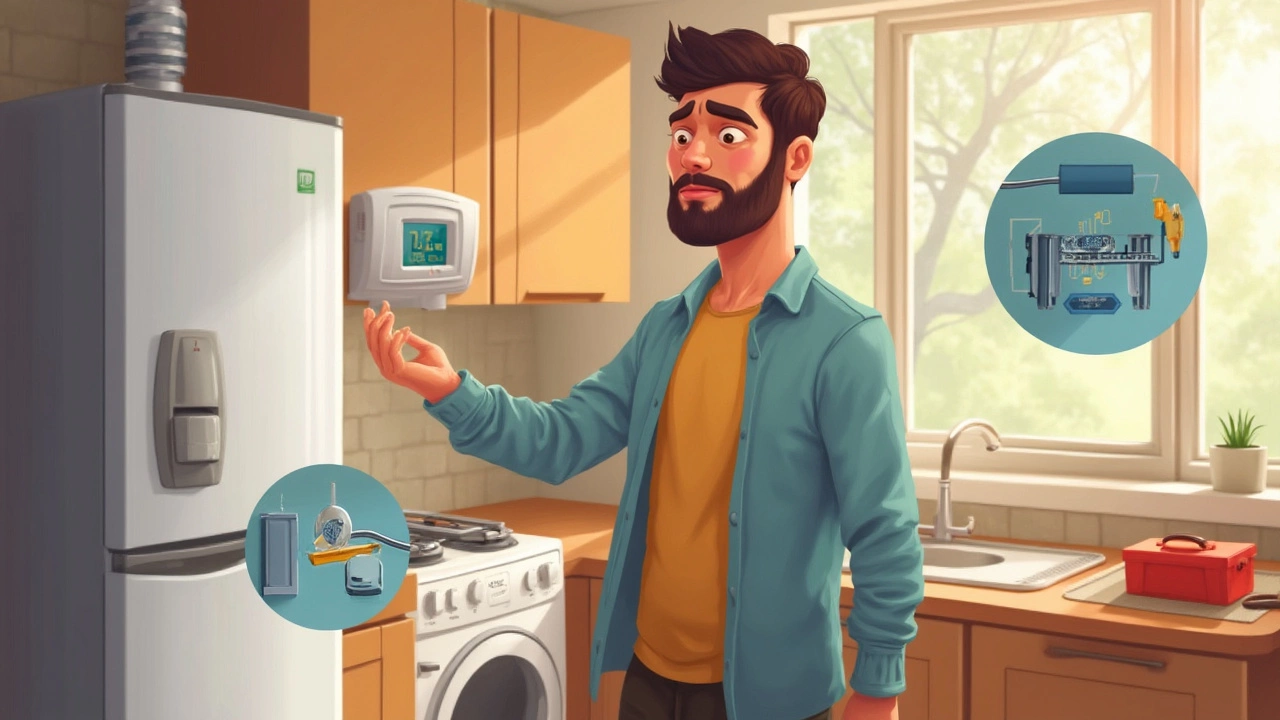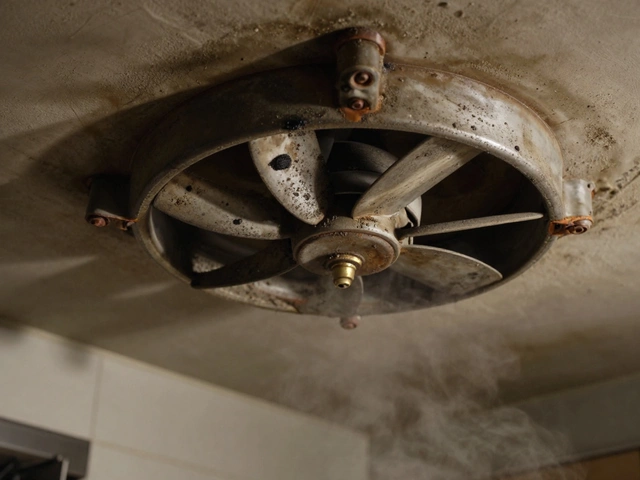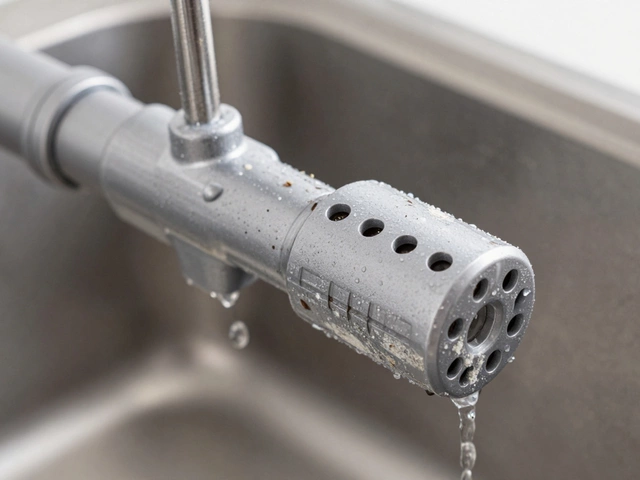Ever turned on the shower, hoping for a nice, hot blast, only to be greeted by lukewarm or even cold water? Yeah, that's a bummer, and it’s one of the most common problems people face with hot water heaters. If you've ever wondered what's up with your heater not doing its job, you're in the right place.
Let's start with one biggie: inconsistent water temperature. It often boils down to a faulty thermostat or sediment buildup in the tank—things that are easy to overlook but can really mess with your morning routine. Imagine a thermostat that's more indecisive than you picking a Netflix show. Or a tank speckled with mineral buildup, turning into a confused mess.
But don’t sweat it. Understanding these common issues can help you troubleshoot like a pro or decide when it’s time to call in the experts. Get ready to dive into some tips that can make your heater act less like a diva and more like the reliable appliance it should be.
- Inconsistent Water Temperature
- Sediment Buildup Woes
- Thermostat Troubles
- Signs It's Time for Professional Help
- DIY Tips for Maintaining Your Heater
Inconsistent Water Temperature
If you've been left out in the cold one too many times, you're not alone. An unsteady stream of hot and cold water is a classic sign of trouble for many hot water heater owners. It's like having your cozy morning ruined by unexpected cold waves during your shower. So, let's dig into why this might be happening.
First off, let's talk about the thermostat. Your water heater's thermostat sets the tone for how heated up things get. If it's malfunctioning, you might find your water temperature acting more like a teenager's moods than a stable supply. It’s either too hot, too cold, or simply tepid and boring.
Another culprit? Sediment buildup. Yep, those sneaky minerals in your water settle at the bottom of your tank over time. This buildup makes it hard for your water heater to do its thing, affecting the entire heating process. The result? A temperamental water temperature that seems to have a mind of its own.
You might wonder how common this is. Well, a survey found that nearly 35% of homeowners face hot water heater issues every year, with inconsistent temperature topping the list. Regular maintenance and simple fixes can make a huge difference.
- Check the thermostat: Ensure it's set to the recommended 120°F. If it's faulty, consider replacing it.
- Flush the tank: Get rid of that sediment that's weighing your water heater down. Experts recommend doing this at least once a year.
- Insulate the tank: Wrap it up with an insulating blanket to maintain a steady temperature.
Don't let your hot water heater throw you off balance. With a bit of care and attention, you can keep things nice and toasty when you need them most.
Sediment Buildup Woes
Okay, so what's this about sediment making a home in your hot water heater? It's not like it's setting up a cute Airbnb or anything. We’re talking about mineral gunk, mainly calcium and magnesium deposits, chilling at the bottom of your tank. This isn’t just some annoying thing; it’s serious because it reduces the efficiency of your heater and can even lead to damage if left unchecked.
Every time your heater draws in fresh water, it brings along a batch of minerals. Over time, they settle at the bottom of the tank, forming a layer that acts like a barrier between the heating element and the water. This means your heater has to work harder, using more energy to heat the water through this layer. Think of it as putting on a heavy winter coat during a summer workout—exhausting, right?
So, how do you know if sediment is causing problems for your water heater? Well, there are a few tell-tale signs:
- Noisy Heater: If it’s rumbling or popping, that’s the sediment moving around as water heats up and expands.
- Inconsistent Water Temperature: Hot one minute, lukewarm the next? Yeah, sediment could be messing with your vibes.
- Increased Energy Bills: That stubborn layer makes your heater work overtime, and guess who pays for that?
Good news is, you don’t have to live with this. Here’s what you can do:
- Regular Flushing: It's a smart move to flush your water heater every six months. Turn off the power, connect a hose to the drain valve, and let the water and sediment flow out until it runs clear.
- Check the Anode Rod: This unsung hero helps prevent corrosion. Replace it every few years to keep the tank in top shape.
- Install a Water Softener: If you're in a hard water area, this might be a lifesaver to reduce mineral deposits.
Watch out—if you're not seeing improvement or feel out of your depth, it might be time to call in the pros for a check-up. By keeping on top of maintenance, you can keep your water heater running efficiently and avoid unexpected breakdowns.

Thermostat Troubles
If you’re finding that your hot water heater is acting up, but the problem doesn’t stem from sediment that's built up, the thermostat might be the culprit. The thermostat is like the brain of your hot water heater, controlling the temperature of the water and telling the unit when to heat up or cool down. When this guy is on the fritz, it can make your water heater's behavior as unpredictable as a cat.
One telltale sign of thermostat trouble is if your water is as cold as your dog's nose, but only sporadically. Temperature swings mean your thermostat might not be working correctly.
Checking the thermostat involves getting a little up close and personal with your heater. First, be sure to turn off the power to the heater to avoid any unwanted shocks. Then, remove the access panel to take a look at the thermostat settings. In many cases, it should be set between 120 and 140 degrees Fahrenheit.
- If it’s set correctly but still not getting up to temperature, gently turn it to reset it. If the problem persists, the thermostat might need replacing.
- Sometimes, however, the wiring can cause these issues. Loose or corroding connections can mess with the thermostat's ability to maintain a consistent temperature. Making sure connections are tight and clean can sometimes work like magic.
Lastly, if you're still having trouble, don’t beat yourself up. Hot water heater thermostats can be tricky and repair might require a professional’s touch if simply resetting doesn’t do the trick.
Signs It's Time for Professional Help
Alright, so you've tried everything from fiddling with the thermostat to flushing the tank, but your hot water heater still acts like it’s got a mind of its own. Sometimes, it's just time to call in the big guns—the professionals. But how do you know when that time has come? Let’s break it down.
First off, if you notice water pooling around the base of your heater, that's a pretty big red flag. Leaks can mean a number of things like tank corrosion, and ignoring them is not just risky but also expensive in the long run.
Does your water heater make noises that could probably score a horror movie? We're talking banging, popping, or cracking sounds. That's sediment burning and settling at the bottom of the tank. It’s like your water heater's way of screaming for help.
Another sign is water that’s either way too hot or not hot at all, even after attempting basic fixes. That’s your heater basically saying, “I give up!”. Faulty thermostats or broken heating elements could be to blame, and this needs a pro to dig in.
Lastly, if you notice rusty water coming out of your taps, it could be a sign of corrosion in your tank or pipes. Either way, it’s not something you want pouring out of your showerhead!
When these signs pop up, it’s probably best to reach out to a water heater repair technician. They'll have the right tools and expertise to fix things up. Keep your water heater in check, and you won't be hit with untimely cold showers or, worse, expensive damages.

DIY Tips for Maintaining Your Heater
We all love the convenience of hot water on demand, so let's keep your hot water heater running like a champ with some simple DIY maintenance tips. Managing these tasks regularly can save you a ton of hassle and even help avoid costly repairs down the road.
First off, always keep an eye on your heater's temperature setting. Most manufacturers recommend setting it at around 120°F. Going much higher can be energy-intensive and increase the risk of scalding. Plus, it might make sediment buildup happen faster.
Speaking of sediment, here's a crucial step: periodically flushing your water tank. This helps clear out the gunk that likes to settle at the bottom. Aim to flush your tank about twice a year. Here's how:
- Turn off the power supply for electric heaters or set the gas valve to 'pilot' for gas heaters.
- Connect a garden hose to the tank's drain valve—make sure the other end is in a drain or outside.
- Open a hot water tap somewhere in your home to reduce pressure, then open the drain valve.
- Once emptied, close the valve, remove the hose, and refill the tank before turning the power back on.
Next, check the anode rod annually. This unsung hero helps prevent rust inside the tank but will eventually need replacement—usually every three to five years. To inspect it, unscrew it from the heater's top, then replace if it's worn down. You can find these rods at most hardware stores.
Keep an ear out for unusual noises, too. Funny clanks and bangs could hint at sediment hardening, which means it's time to flush. When regular maintenance just doesn't cut it anymore and problems persist, don’t hesitate to get some professional help.
Lastly, offer some TLC to your heater by insulating the pipes. It’s not just for staying warm—insulation can help maintain that precious heat, improving efficiency and cutting down on energy bills. Grab some pipe insulation sleeves or even a pre-cut jacket wrap for the tank.
By keeping up with these water heater repair tips, you’re doing future you a favor. Prevention is way easier than repairing or replacing a whole unit, wouldn’t you agree?





